título: Conform To Deform - The Weird & Wonderful World Of Some Bizzare
nº de páginas: 376
isbn: 978-1-911036-95-1
data: 2023
1ª Edição / 1st Edition
Along
with Factory, and Creation, Some Bizzare was the vanguard of outsider music in
the 1980s. The label’s debut release reads like a who’s who of electronic
music, featuring early tracks from Soft Cell, Depeche Mode, Blancmange, and THE
THE, while over the next decade its roster would include artists such as Marc
Almond, Cabaret Voltaire, Einstürzende Neubauten, Foetus, Swans, Coil and
Psychic TV.
For a time, Some Bizzare was the most exciting independent record label in the world, but the music is only half of the story. Self-styled label boss Stevo Pearce’s unconventional dealings with the industry are legendary. Sometimes they were playful, other times less so; either way, he was a force to be reckoned with. His preternatural ability to spot talent meant his label was responsible for releasing some of the decade’s most forward-thinking, transgressive, and influential music.
The Some Bizzare story spans the globe: from ecstasy parties in early 80s New York to video shoots in the Peruvian jungle, from multimedia events in disused tube stations to seedy sex shows in Soho. There are million-selling singles, run-ins with the Vice Squad, destruction at the ICA, death threats, meltdowns, and, of course, sex dwarves. And the centre of it all is Stevo: DJ, entrepeneur, label boss, manager, art terrorist, disrupter. Conform to Deform is the previously un told story of the music and art he put out into the world, and how a teenager from Dagenham took on the music industry in its pomp and – for a while, at least – beat it at its own game.
Wesley
Doyle has been a journalist for over twenty years and has written for The
Quietus, Record Collector, Long Live Vinyl, and Vive Le Rock. He’s never quite
recovered from watching Soft Cell and J.G. Thirlwell tear through Suicide’s
‘Ghost Rider’ on teatime TV back in 1983.
Follow
him on Instagram @wesleydoylewrites
The story of Some Bizzare is a worthwhile on to be told, as I suspect there was never such an unconventional record label, or a person running one as fascinating as Stevo. It’s right he has a legacy in the music industry, however chequered it may be.
MARC
ALMOND, SOFT CELL / MARC & THE MAMBAS
Stevo exerted huge energy in creating what was – for two or three years, at least – the most exciting independent record company in the UK. For good or bad, he was a larger-than-life character in an industry that’s now so grey, corporate, and sterile that it seems like a lost world.
MATT
JOHNSON, THE THE
I felt an affinity with Stevo because he came from a proletarian background and turned it around through force of will and imagination. I admired his chutzpah, and if you were in on the joke it was so funny to watch.
MICHAEL
GIRA, SWANS
They were very heady days for Some Bizzare, and there was a lot of success. Probably enough time has passed for someone to figure out why what happened, happened.
J.G.
THIRLWELL, FOETUS / WISEBLOOD
A person that gives you a false smile is the enemy
STEVO
INTRODUCTION
ON JULY
15, 1983, the electronic duo Soft Cell appeared on the Channel 4 music show
Switch. The pair – Marc Almond and Dave Ball – had scored a massive global hit
two years previously with their cover of Gloria Jones’s ‘Tainted Love’, but
since that initial success they seemed unconcerned about maintaining a career
as pop stars, and their music had become darker and consciously less
commercial. For their Switch appearance, they appeared as they always had done:
Almond up front with Ball on keys at the back. They rattled through a
ramshackle version of forthcoming single ‘Soul Inside’ before Almond introduced
saxophonist Gary Barnacle and guest vocalist Clint Ruin. Sat in front of the
TV, my fourteen-year-old self was unaware that his life was about to take a
turn.
Ruin –
resplendent in leather jacket, aviator shades, and gravity-defying quaff –
emitted a blood-curdling scream before the drum machine kicked in and he and
Marc Almond began trading lines. Ball abandoned his keyboard from some heavily
distorted guitar, and Barnacle seemed to be playing a different song entirely.
The reverb on the vocals soon made whatever words were being sung
indecipherable, and Almond and Ruin ended up in a heap on the floor, entangled
in microphone leads, screaming into each other’s faces. Five minutes in and,
with the cacophony showing no sign of an end, the producers ran the credits and
the screen faded to black. It was the most incredible thing I’d ever seen.
I was
already a big fan of Soft Cell. I’d liked ‘Tainted Love’, but I didn´t properly
fall for their seedy synth-pop until the follow-up single, ‘Bedsitter’. I was
given their debut album. Non Stop Erotic Cabaret, for Christmas in 1981 and
eagerly followed their exploits in the pages of Smash Hits and occasionally
Sounds or Record Mirror. As much as I loved Soft Cell, though, it was the 1983
album Untitled by Almond’s side project Marc & The Mambas that really
expanded my musical horizons. It wasn’t just the other artists’ songs he
covered – Lou Reed, Scott Walker, Syd Barrett; all new to me – it was the
people he worked with: Anni Hogan, the preternaturally talented pianist who
would be at Almond’s side for much of his 80s solo works; and Matt Johnson, who
co-wrote and played on several tracks. Johnson also recorded as THE THE, and
when his ‘Uncertain Smile’ single was released a few months later, I bought it
on spec. It remains one of my favourite records. Soon, I started to notice all
this new music had the same two words on the sleeves: Some Bizzare.
They
also had cryptic messages, signed by the mysterious ‘Ø’. ‘You can only have
100% trust in yourself.’ ‘Destruction is not negative, you must destroy to
build.’ ‘With every kick in the face and every hurdle you pass the rewards get
greater.’ Through the music press I discovered ‘Ø’ was in fact Some
Bizzare boss Stevo, who, despite only being a teenager, was managing these
artists and brokering deals with major record labels on their behalf. The more
I read about Stevo, it became apparent that he was as much a focus for the
press as his artists, and he was heavily involved in how they were presented to
the world.
Part of that presentation was the artwork that adorned the records – all
Some Bizzare releases had the most incredible sleeves. Whether the vivid images
captured by photographer Peter Ashworth, the evocative design and brush work of
Huw Feather, the beautifully grotesque paintings of Val Denham, or the twisted
and disturbing art of Andy ‘Dog’ Johnson, the visual side of Some Bizzare was
as striking as the music.
The uncredited song Soft Cell played on that Switch performance was
‘Ghostrider’ by Suicide. I also discovered that ‘Clint Ruin’ was an Australian
called J.G. Thirlwell, who recorded under the name Scraping Foetus Off The
Wheel – you can imagine how that went down in my local Our Price. I set about
seeking out not only the music of other Some Bizzare artists but the bands they
aligned with: Nick Cave, The Cure, Siouxsie & The Banshees, Danielle Dax,
Sex Gang Children. I also caught the Batcave tour when it came to the
neighbouring town of At. Albans. I’d found my tribe.
When Marc & The Mambas’ second album, Torment And Toreros, arrived
later in the year, it shocked and elated me in equal measure. It was dark,
passionate, vicious, tortured, beautiful, and damned. Johnson wasn’t on it this
time, but the name Frank Want was. That name also featured on THE THE’s debut
album, Soul Mining. Frank, it transpired, was another pseudonym for J.G.
Thirlwell. The pieces were falling into place.
Nostalgia was a notable absence in the early-to-mid 80s; there was no
looking back, the momentum was always forward. I never bought a record from a
previous decade – why would I? There was so much going on right in front of me.
Everything about Some Bizzare was new – the artists, the attitude. It was
transgressive but courted the mainstream, it was oblique but wanted to
communicate, it was niche but didn’t see why it couldn’t be incredibly
successful. I made many a blind purchase during this time. As a teenager, this
was a great financial risk: £5.49 was a lot of money, so you had to commit to
your purchases. Not that I ever had any problem with Foetus or Cabaret Voltaire
record, but I’d be lying if I said there weren’t some worrying moments when
Psychic TV and Einstürzende Neubauten first hit the turntable. And as for
Swans… But I persevered, and through Some Bizzare my ideas of what popular
music could be kept expanding.
So who were the people who brought these new sounds to us? I was
endlessly fascinated by Stevo and the Some Bizzare family. On record-buying
trips to London, I would wander through St Anne’s Court, past the Some Bizzare
offices at Trident Studios, and look up at the windows. What is going up on
there? I’d wonder. Plenty, as I’ve since found out.
Much as been written about maverick record label bosses from the 1980s,
including Creation’s Alan McGee, Factory’s Tony Wilson, and Postcard’s Alan
Horne, all of whom were, to varying degrees, headline-makers in their own
right. Stevo and Some Bizzare have a roster to rival them all, yet his tale
remained untold. His label released music that was challenging and credible yet
still capable of serious commercial success. Both as record label and
management company, Some Bizzare not only brought the world Soft Cell and THE
THE but also gave left-field acts such Cabaret Voltaire, Psychic TV, and
Einstürzende Neubauten a decent crack at mainstream success. Yet for all the
incredible music Some Bizzare produced, the impact these releases had on
popular culture, and the cast of colourful characters – not least of all Stevo
himself – no one had been prepared to get that story down. I couldn’t
understand why. So my reason for writing this book is simple: I wanted to read
it, and it seemed no one else was going to do it.
Once a publishing deal was in place, it was a case of tracking the
relevant people down and convincing them to contribute. It became apparent that
Stevo’s complex business relationships with the artists and major labels he
licensed them to might just be the reason this book hadn’t been written before.
It would surely take a lawyer, not a music writer, to unravel all the
contractual disputes and labyrinthine legal wrangles that plague the label to
this day. But that would have made for a very dull book indeed. Instead, I
channeled my fourteen-year-old self and wrote the Some Bizzare book he would
have wanted to read: light on litigation, heavy on the music and the mavericks
who made it.
The process of writing this oral history has given me the opportunity to
talk with those mavericks. It’s been a labour of love, and I hope I’ve done
them and their work justice. A few key artists are sadly no longer with us, and
a couple didn’t want to be involved. But of the eighty or so individuals I
interviewed, most had happy memories of the time when the Some Bizzare offices
– wherever they happened to be – became not just a workplace but a home.
As for Stevo – who initially took a lot of convincing to be involved,
then eventually tried to take over – he was everything I could have wanted and
more. A complicated, contrary figure who feels shut out from the industry in
which made his name, he is the Peter Pan of post-punk. His desire to correct
the record and right wrongs as he saw them left me with hours and hours of
audio to work with. And despite the bluster and obfuscation – intentional and
otherwise – he’s still capable of creating sparks of genius. He is also a
genuinely funny man. No matter how exasperating he can be – and believe me, he
can – I could never truly feel aggrieved by Stevo. I sincerely hope his plans
for a Some Bizzare relaunch come to fruition, and all the music he facilitated
in the 80s and 90s and beyond will be remastered and available as shiny new
reissues. I’ll be the first person in the queue for them.
Just I was finishing off this book, Soft Cell headed out to play their
first North American shows in twenty years. The five-date tour – sadly without
Dave Ball for health reasons – arrived at New York’s Beacon Theatre on August
30, 2022. After playing through a selection of new and back catalogue material,
Marc Almond announced a special guest for the encore, and out strode J.G.
Thirlwell, still stick thin, this time resplendent in a white suit. They tore
through “Ghostrider”, just as they had on that TV show nearly four decades
earlier. It was just as wild and chaotic, beautiful, and righteous – weird and
wonderful. Still Bizzare after these years.
WESLEY DOYLE, OCTOBER 2022













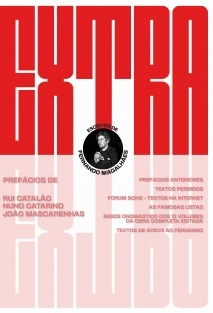
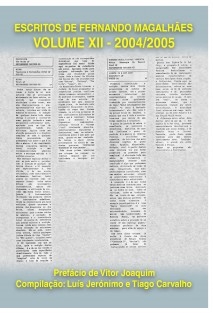




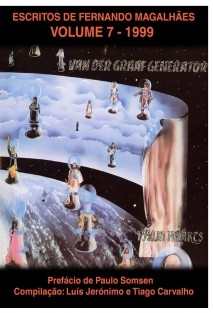
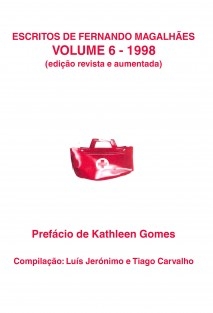
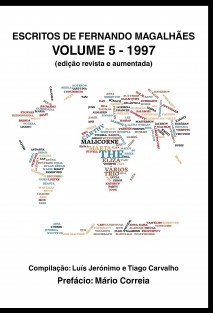





_Bubok.jpg)
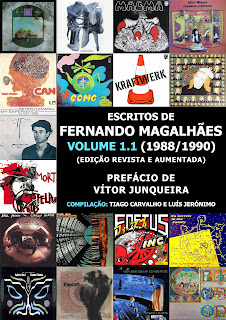





















Sem comentários:
Enviar um comentário